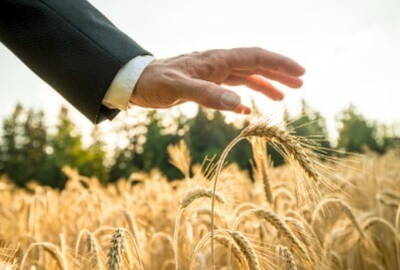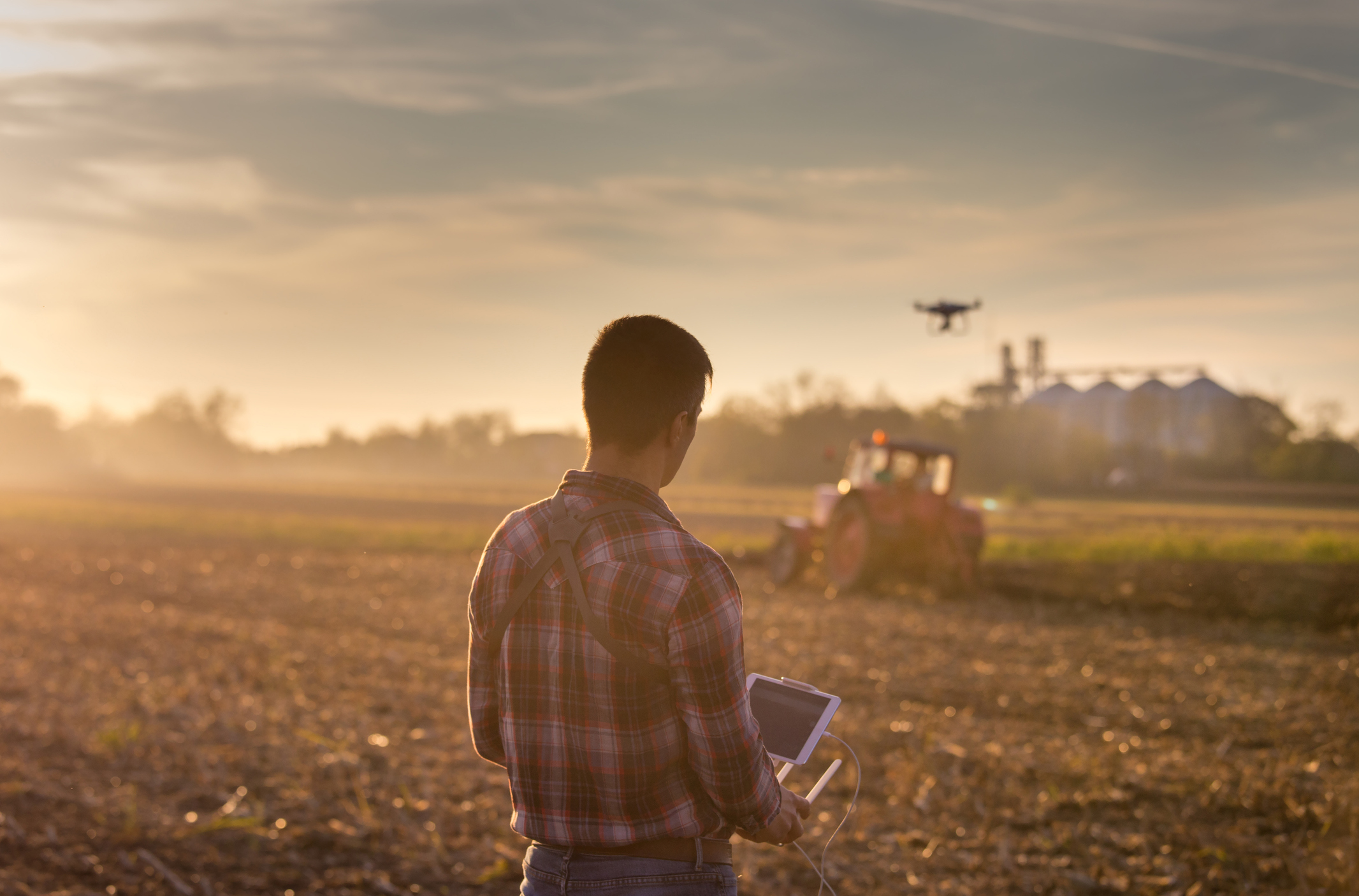While historically agriculture was based on hard labour, agtech has become a vital part of the industry. Whether you’re a farmer or agricultural retailer, you’re likely to be dependent on technology to improve efficiency and productivity.
Precision agriculture, in simple terms, is the application of modern information technology to agriculture to make the field more accurate and productive. The precision agriculture market was worth £4.37 ($6 billion) in 2020. According to a report by Grand View Research and the market will be worth £11.91 billion ($16.35 billion) by 2028.
What Is Precision Agriculture?
Precision agriculture (PA), also known as precision farming, satellite farming and site-specific crop management (SSCM), refers to incorporating information technology into agriculture to make it more controlled and accurate. This is used for both crop and livestock farming. Examples of technology used in precision agriculture include robotics, drones, GPS systems, automated hardware, GPS-based soil sampling, autonomous vehicles and variable rate technology.
One of the first instances of precision agriculture was when GPS guidance was first introduced for tractors. Years later, this is the most common use of precision agriculture today and consists of automatic steering based on GPS-connected controllers and a field’s coordinates. Because this reduces driving errors and overlaps, farmers benefit from less wasted time, fuel, seed and fertiliser.
Precision agronomics is also an important part of precision agriculture. It consists of combining technology and methodology to create more accurate farming techniques. When used correctly, these ensure efficiency and profitability while still keeping sustainability in mind. Actionable data gathered by the technology used gives farmers insight and helps them determine when and where to use resources like seeds, chemicals, fertilisers, etc., for maximum yield.
Technology Used in Precision Agriculture
Precision agriculture as a whole has been in existence for several years. However, the impressive technology used today has made the field more popular, becoming increasingly mainstream over the past decade. Most farmers in the developed world use at least one precision agriculture practice. The following is some of the most well-known technology used in precision farming;
Remote Sensing Technology. Remote sensing technology has been used in agriculture for decades and is extremely helpful in managing and monitoring land and water. From estimating moisture levels in the soil to determining the factors that can be damaging a crop at any given moment, remote sensing technology uses drones, satellites and other sources to collect data and use it to help in decision-making.
GPS Soil Sampling. Soil sampling shows farmers a field’s pH level, available nutrients, moisture level and other data. Knowing this can help guide decisions such as crop choice, fertiliser and seed optimisation and much more. This data can be made more accurate by sampling specific locations. GPS soil sampling does this by using GPS to look for more accurate sampling locations. Unlike methods like W sampling, GPS soil sampling ensures soil analysis is available for every hectare of a field.
Computer-Based Applications. Computer-based applications are used to make precise plans for farms, field maps, yield maps and more. These allow farmers and precision agriculture specialists and technicians to use inputs like fertilisers, seeds and pesticides more effectively and precisely. In addition to producing higher yields, this helps reduce costs and makes agriculture more sustainable.
Variable Rate Technology (VRT). Variable Rate Technology (VRT) allows farmers and growers to control inputs applied in different locations. It can be manual, map-based or sensor-based and allows chemicals, fertilisers, irrigation water, lime, gypsum and other inputs to be applied at different rates across different fields or locations. This saves time and resources since multiple passes aren’t required and everything can be completed in a single pass without changing settings time and time again.
Jobs in Precision Agriculture
As precision agriculture becomes more popular, there is an increasing number of jobs available in the field, from working with farmers and guiding them to jobs within retail and management.
Precision Agriculture Specialist - A precision agriculture specialist provides both technical assistance and support to farmers and growers who use precision technologies on their farms. The equipment varies from mapping equipment to global positioning systems and satellite equipment. In addition to helping farmers and growers understand and use this equipment, precision agriculture specialists also deal with the equipment in other capacities. Not only can they sell and make recommendations on which precision equipment to buy, but they can also be hired to install, inspect, and repair such equipment. Furthermore, since precision agriculture specialists are specialised in this equipment, they can offer training to other parties.In order to get into this field, you must have a minimum of a bachelor’s degree in agronomy, agricultural technology, agricultural engineering or another related field. It’s also desirable to have at least one-two years of experience in precision agriculture technologies and hands-on experience with agricultural equipment.
Remote Sensing Technician - Remote sensing technology is a huge part of precision agriculture. The industry needs those experienced in remote sensing to assist those in the field. These technicians help sensor configurations and develop or prepare flight plans. Additionally, they can also operate remote sensing equipment such as sensors, scanners and/or drones.
Conservation Specialist - Whilst many jobs in precision agriculture focus on improving yield and increasing productivity, others focus on conservation and protecting the environment. While conservation specialists also work with farmers, they do so in a capacity to help them adopt more sustainable practices that help conserve the environment and the land in both the short term and the long term.
Research and Teaching - As technology becomes more advanced, those conducting research find newer and more effective ways of practising precision agriculture. Those who enter research and development will likely need advanced degrees in agricultural engineering, agronomy and other related subjects. There are also jobs available as assistants in research labs in both government and private facilities. There are teaching and education roles in colleges, universities and extensions for those interested in passing on their knowledge to the next generation of agriculture specialists.
Precision Farming Coordinator - Precision farming coordinators analyse maps, images and data from remote sensing technology to compare physical data on fertilisers, soil, weather and more to help make more informed farming decisions.
How to Find Agricultural Jobs in Precision Farming
Are you interested in agricultural jobs in precision farming? Agricultural Recruitment Specialists can help. We work across the UK, Europe and worldwide to connect farming talent with organisations. Whether you’re in the farming, food, horticulture or equine fields, we can help you find your dream job.
If you’re looking for agricultural and/or farming talent, we’ve got you covered too. We work with your organisation to find you the perfect candidate for your vacancy. Our client services help with recruitment over different levels and across different fields within agriculture. Whether you’re looking for a trainee, a graduate, or someone at management or director level, we can help. Reach out to us here for more information.












